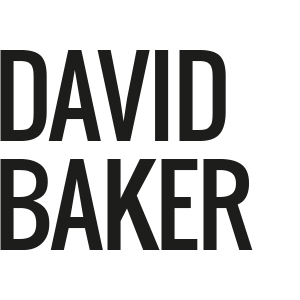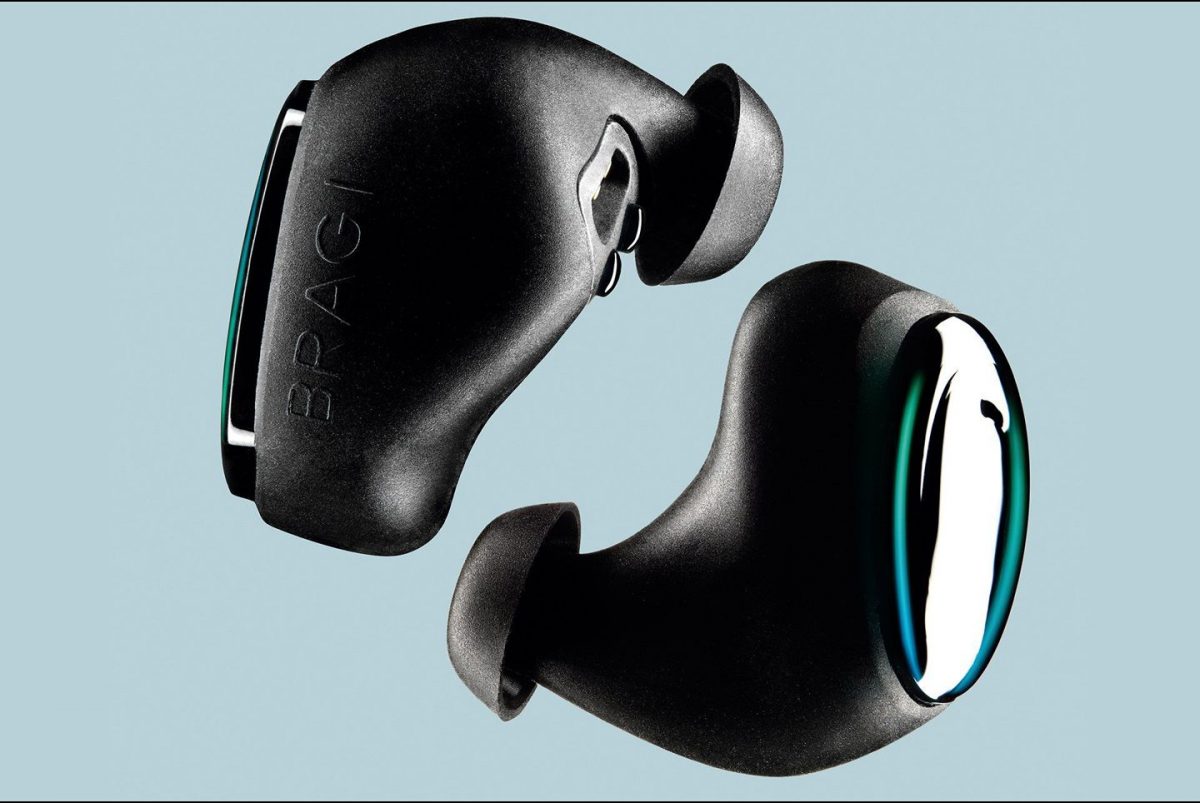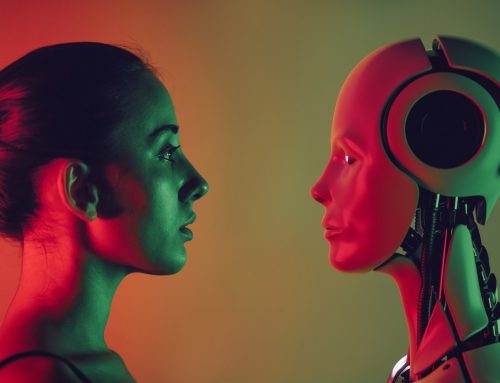A Munich company takes on Google Glass
Wired, October 2015
From a cramped office in Munich, Nikolaj Hviid is busy creating Europe’s most ambitious consumer hardware product. It’s a device so complex that not even Apple or Google have tried something similar. And its fans love it. Even without seeing it.
The Dash is an in-ear combination of wireless earbud, MP3 player,fitness tracker, personal coach and real-time heart and blood monitor. Its barely promoted Kickstarter campaign reached its $260,000 (£170,000) goal within two days and had hit $3.4m by the time it closed two months later – a then European record.
The trouble is, the project is running late. Early supporters were promised finished units in October 2014. Instead, the company behind The Dash, Bragi, is hoping to ship its first batch 12 months later. And, almost daily, it is discovering extra challenges that have surfaced as production levels have increased. Microscopic cracks have appeared in the product’s ultrasonically welded casing that let in water; and a large amount of (externally written) software has arrived late and full of bugs. Some of Bragi’s challenges are those faced by any European startup with an eye on going global, but many come from the fact that making physical things is a lot more difficult than designing an app. “It is tough to make hardware,” says Hviid, an amiable 41-year-old Dane, in an accent that hovers between Denmark, the UK, the US and Germany. “When you ship it, it has to be right. You can’t just do an update and you are fine.”
The Dash is an in-ear personal assistant. Tap and slide the touch-sensitive pad on your right ear, and you can flick through a library of 1,000 MP3s, switch between ambient and noise-cancelling modes and take or reject a phone call. Do the same on your left, and you can be coached in real time through a run, swim, cycle or workout, with audio updates on measures such as your pulse, respiration rate and blood-oxygen levels.
It was inspired, says Hviid, by a conversation that he had with his sister, who died from multiple sclerosis in 2013. “She was diagnosed when she was 20,” he says, “It was the day before Christmas. And it got bad quite fast. She was soon in a wheelchair. But, even though she felt shit, she was a happy person. I asked her why, and she said, ‘I know that, every day I live, the next day is going to be worse, so today is officially the best day of my life. And you know what, Nikolaj? It is the same for you. But your perspective is longer than mine.’ Since then, I have been thinking about how to help everyone get the best out of that single day.”
In many ways The Dash and Google Glass perform similar functions — acting as intimate personal assistants, giving you the information you need when you need it. But, for Hviid, Google Glass is, literally, too in your face.
Hearing, he says, is “completely different. It is a parallel interface. You hear everything at the same time. So, if you want to make a discreet personal assistant, the ear is better than the eye.”
The word “discreet” comes up often in conversations at Bragi. Although the company now has its fair share of geeky jobs (and job titles – staff members are called things like “Master of wires” and “Ultra-low-power guru”), many of its staff share Hviid’s slight discomfort with technology. “I am a technology sceptic rather than a optimist,” Hviid says. “I see the opportunities of both but I don’t see a techno future; I see a human future.” And it is this attitude that has made it such a hot place to work. Katia Riley, 33, joined in February as an industrial-design intern, having studied design at the University of Applied Sciences in Berlin. “I saw a presentation by Mairjo [Sarac, chief marketing officer] and immediately wanted to work for Bragi,” she says. “I like the way The Dash integrates technology into our lives without separating us from each other. At the moment, technology does just that. If you are on your smartphone, I don’t feel I can talk to you. However, if you wear The Dash, I don’t feel like I can’t communicate with you.”
It may be, of course, that they are listening to something else – an adult version of trying to talk to a teenager with their headphones on. Riley laughs. “I guess you’ll have to trust them on that.”
The Dash is likely to have ambitiously strong audio capabilities. (At the time of going to press, Bragi had been unable to provide a model for testing.) Two chip-based microphones in each ear will pick up external sounds and the user’s voice – the latter from the bones in the skull. High-end in-ear speakers will ensure the incoming sound remains crisp. And the 100mAh LiPo battery will deliver up to four hours of music in a single charge.
But that is only the start. The Dash will use its own operating system, running on a 32-bit ARM processor (with access to 4GB of flash memory), to collect, clean, sort and interpret data from a cluster of sensors that Hviid’s team has designed into the device — all in real time. These will collect not only Fitbit-type movements but, boldly, data points from inside the body, such as pulse, respiration rate and blood oxygen levels.
The point of all these components, says Friedrich Foerstner, Bragi’s head of sensors, is to give the device a sense of the context around it, of what its wearer is actually doing. “Movement is what defines a human being,” says the 36-year-old. “We can’t record thinking too well, not in such a small device, but we can understand things from your movements and actions.”
At its simplest level, The Dash will be able to detect what activity its user is engaged in — initially, running, walking, swimming or cycling, but with more activities to come. Two chip-based inertial-measurement units (IMUs) will convert head movements into more useful measures such as distance travelled, speed, steps taken, pace and rotation. (Distance and speed will rely on user calibration because The Dash won’t have GPS capability – “it’s too energy-consuming,” says Foerstner, “and there’s a problem with the size of the antenna.”) Customers will also be able to make customisable head gestures to control the device — nodding, for example, to take a call, or looking up to read a text.
Each unit will also feature a set of LED-based sensors to monitor body vital signs. This is where it gets tricky. “The IMU can give you a context, how you behave and so on,” says Foerstner. “But we also want to look inside you and look at your body in relation to the movement. The heart is one of the most crucial measurement points for that. How it reacts to movements and activity lets us understand a lot about your condition.”
The Dash uses two LEDs – one red and one infrared – intended to monitor pulse, blood flow and blood-oxygen levels. These fire pulses of light, 50 to 100 times per second, through the thin skin on the inside of the ear and into the capillaries, which then reflect them back. Fuller capillaries (caused by the heart contracting) reflect light differently to capillaries that are relaxed, allowing The Dash, in theory, to measure heart rate. Similarly, oxygenated red blood cells reflect light differently to those carrying less oxygen.
This is not new science. It is used every day in hospitals to monitor a patient’s pulse and oxygen levels. But hospital sensors, for the most part, are based on transmission, not reflection, and use a clip on the end of the patient’s finger to ensure a constant pressure, which is crucial for accurate readings. Because of these differences, some sensor experts have expressed doubt regarding The Dash’s ability to gain meaningful readings from an in-ear sensor, but Foerstner is confident that Bragi’s approach is the right one. Early models, he says, are performing well against consumer-level sports ECG monitors, and the company is aiming for clinical-level measurements in the future. Issues such as hair length and skin colour don’t appear to be distorting the sensors’ readings. Pressure, though, is important but that is solved, he says, by The Dash’s shape and size. The devices fit snugly in the ear and the final version will ship with four sizes of silicone outers.
Foerstner says that, since October 2014, the company has been testing the devices on “more than 100” people, in trials that have covered walking, running, swimming, cycling and being at rest. It is now expanding trials to a wider user base. (The company declined to share the results of these trials with WIRED, saying they had not yet been properly analysed.)
For Hviid, the point of The Dash’s sensors is that they will allow customers to make more sense of what is going on inside their bodies. He chose health and fitness as a starting point, as it is a straightforward sell into an existing market, but he sees almost infinite uses for the device once it has been launched. And he is confident that The Dash will give more meaningful feedback than most fitness trackers on the market. “These trackers that just measure your steps are daft,” he says. “Why do we want to know how many steps we have taken? What does 8,000 steps mean for you? Instead, how about knowing the relationship between your oxygen concentration, the pace you made and the route you took? That’s what we are trying to get to. We want to understand the quality, not quantity.”
He is also, he says, very aware of the potential dangers of producing such high-quality personal data. “Whenever you make something, you need to think about the ethical part of what you are doing. If I can understand the context of a person, just by adding sensors, the impact is that someone will know everything you do, every intention, every motivation you have. Maybe not tomorrow, but maybe in 20 years, it will be possible to know everything about you. And if that information is stored somewhere, someone can have access to it.”
The Dash will be one of the very few internet-of-things devices that doesn’t have to be connected to the internet. Data processing and storage will all be done on board and it will function fully without the need for an external device such as a smartphone.
But doesn’t that risk jeopardising the myriad opportunities that big data offers, especially when it comes to areas such as healthcare? Surely the more people there are sharing, the faster we can solve medical problems that so far have eluded us?
He disagrees. “Statistically, how many do you actually need?” he says. “Do you really need millions of people sharing? I think hundreds of thousands are enough, statistically more than enough. If you do medical studies, none of them are in the millions and very few of them are in the hundreds of thousands. You don’t want everyone to give their data. You want some; the ones who agreed to it.”
By any measure, The Dash is behind schedule. When Bragi launched its Kickstarter campaign in February 2014, it planned to be shipping to early investors the following October and to be in full production a month later. Now it hopes to ship the first batch of 15,000 units to Kickstarter investors this month and 10,000 more by Christmas.
In some ways, the company has been overwhelmed by demand. It hopes to sell 600,000 units by the end of 2016. But Hviid is frank about the difficulties the team has faced developing the hardware and software. In an update on Kickstarter in August 2015 headed “Getting Close”, he admitted the previous weeks had been “very intense” and listed a number of mechanical and performance issues that arose as the company moved towards higher production volumes – from 40 units per day to more than 1,000. “What we are making,” he says, “is a small computer that fits inside a dummy, a computer that is as powerful as a laptop was 15 years ago. That was a massive undertaking.”
Karin Schlierenkämper, Bragi’s head of hardware, shares some details. “The Dash is very tiny and very complex,” says the 35-year-old, who joined in March 2015 after working for one of its suppliers. “You have to fit a lot – a computer, two microphones, a speaker, sensors and a power supply — into a space of about a centimetre cubed.”
A significant challenge her team faced was how to get the two units to communicate. They originally used Bluetooth, but it doesn’t travel well through soft tissue so the team had to beamform the wave behind the user’s neck, a tough challenge made worse by the fact that one of the chips they were using consistently underperformed. After a fruitless few weeks, they moved instead, says Schlierenkämper, to an old technology, near-field magnetic induction, used in hearing aids. They re-engineered it to work in the high-spec environment of The Dash. The problem was solved but the pivot had set the project back yet further. “We had to go back to our supporters and say we weren’t going to be able to deliver by October,” says Hviid. “We had to say, ‘Trust us.'”
Bragi’s Kickstarter success insulated the company from needing to raise venture capital. For its first two years it existed on Kickstarter funds plus a large chunk of the Hviids’ own cash. (“I’m not saying exactly how much,” he says, “but I spoke to my wife and we put in all we had.”) In January, he raised $10 million from angel investors, bringing them into the project, he says, partly for their money – the company had faced a serious cashflow issue in 2014 that led to staff taking pay cuts — but more because he feels he can learn from them. “We had the opportunity to raise funds from people who had a lot of knowledge where I don’t,” says Hviid. “And it has been so enlightening. When you work closely with people like that,
you realise how much further you have to go.”
Hviid’s goal now, of course, is to start shipping, and the first units should be arriving by the time you read this. But his sights are set into the future. “This is just the start, he says. “I have created a product that is special and difficult to explain, because it has the potential to do much more than you can see. I would like to provide practical-skills learning through The Dash, for example. Having this device in your ear – maybe connected with something visual, who knows? – can enable people without any formal training to do things they couldn’t do before. Someone untrained could be shown how to build a house, for example, and it will protect them when they are doing it. At the moment, we are marketing The Dash as a fitness-and-health device. But when you start expanding into all sorts of areas, such as industrial or medical applications, the entire solutions base becomes more complex.”
He pauses and looks out of the window. “We’re here for a small fraction of time, so we should be happy and enjoy ourselves. I hope to help people achieve this. Your imagination is never big enough for what we are able to do.”
INSIDE THE DASH
1. The fit
The Dash’s ergonomically designed silicone sleeves range from extra small to large in order to fit all ear sizes.
2. The computer
It is powered by a 32-bit ARM processor; its 4GB flash memory will be able to comfortably fit about 1,000 songs.
3. The battery
Bragi expects to use a lithium polymer battery for The Dash. This would be able to fully charge within two hours.
4. The microphone
In order to minimise the impact of ambient noise, the microphone listens to your voice from the ear bone.
5. The sensors
The inertial units track the wearer’s movement; the LED-based sensors check on vital functions.
6. The LED
This blue corona “breathes” every ten seconds. It also gives feedback during calls and other functions.






